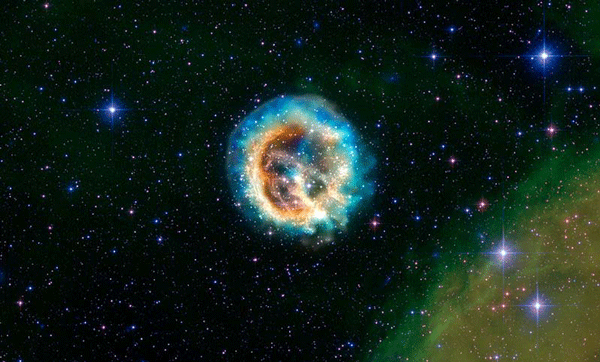How Did Nobel-Winning Physicists Discover the Expanding Universe's Acceleration?

Today the 2011 Nobel Prize in Physics was jointly awarded to the three scientists who discovered that the expansion of the universe is accelerating, a phenomenon attributed to a mysterious force called dark energy. How did this discovery come about?
The nobel award recognizes astrophysics work done in the mid- to late-1990s by Saul Perlmutter of Lawrence Berkeley National Laboratory and two members of the collaborative High-z Supernova Search Team, Adam Riess of Harvard University and Brian Schmidt of the Australian National University.
The two groups were independently studying type Ia supernovas, the violent explosions of dying white dwarf stars. When a low-mass star – one like our sun – fuses all of its hydrogen into helium, it will expand into a so-called red giant and begin fusing helium into carbon and oxygen. The star will then shed its outer layers, which will then form a planetary nebula, leaving behind a dense core of carbon and oxygen. [Alternative Theory: Accelerating Universe and Dark Energy Might Be Illusions]
This dead core is called a white dwarf; typically, it will be about the size of the Earth and with the same mass as our sun.
If a white dwarf has a stellar companion, it can siphon material off from its neighbor. As the white dwarf accretes material, it experiences an increase in pressure and density, which in turn increases its temperature. When the white dwarf accretes enough material, it can undergo a runaway fusion of carbon and oxygen, dramatically increasing its temperature and eventually leading to a violent stellar explosion, known as a supernova.
Type Ia supernovas are useful to astronomers because of the similarities in their light curves, which are graphs of their light intensity as a function of time. In fact, type Ia supernovas are so similar in luminosity that astronomers use these explosions as a "standard candle" to measure the distances of objects in our universe.
The Berkeley and High-z teams measured the way light from Ia supernovas distorted to see how quickly galaxies are moving away from each other – that is, how fast the universe is expanding. As light travels toward us through an expanding space, it gets stretched, becoming redder in color; it has been "redshifted."
Get the Space.com Newsletter
Breaking space news, the latest updates on rocket launches, skywatching events and more!
Light coming from supernova explosions far away is redshifted more than light from closer ones, having traveled a greater distance and for a longer time through an expanding universe.
But the teams found that light from the closest supernovas is disproportionately redshifted; it has undergone more than its fair share of stretching. Because this light left its source more recently, this implies that the universe is now expanding faster than it was long ago.
In other words, the expansion of the universe must be accelerating. All the stars, galaxies and galaxy clusters are moving faster and faster apart.
This, of course, is counterintuitive – you'd think that the expansion of the universe is slowing down because of gravity. So, astronomers have reasoned, there must be another mysterious, unaccounted force behind the universe's unexpected behavior, which they've named dark energy.
This story was provided by Life's Little Mysteries, a sister site to SPACE.com. Follow Joseph Castro on Twitter @JosephBCastro. Follow Life's Little Mysteries on Twitter @llmysteries, then join us on Facebook.
Join our Space Forums to keep talking space on the latest missions, night sky and more! And if you have a news tip, correction or comment, let us know at: community@space.com.


